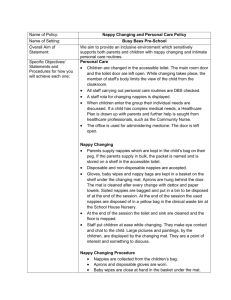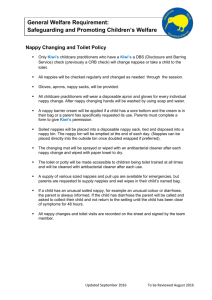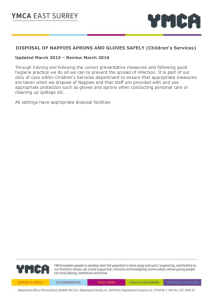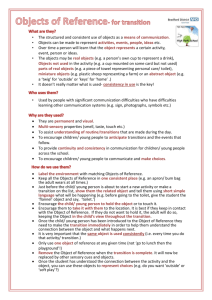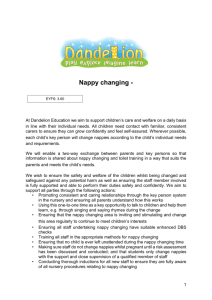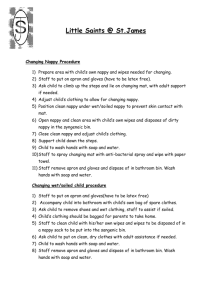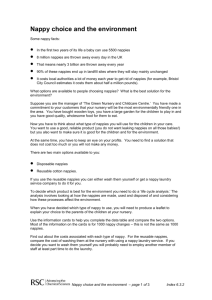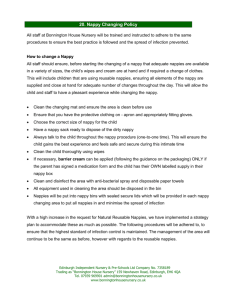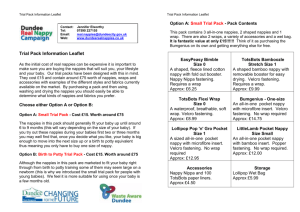40 nappy changing - Leapfrogs Pre
advertisement
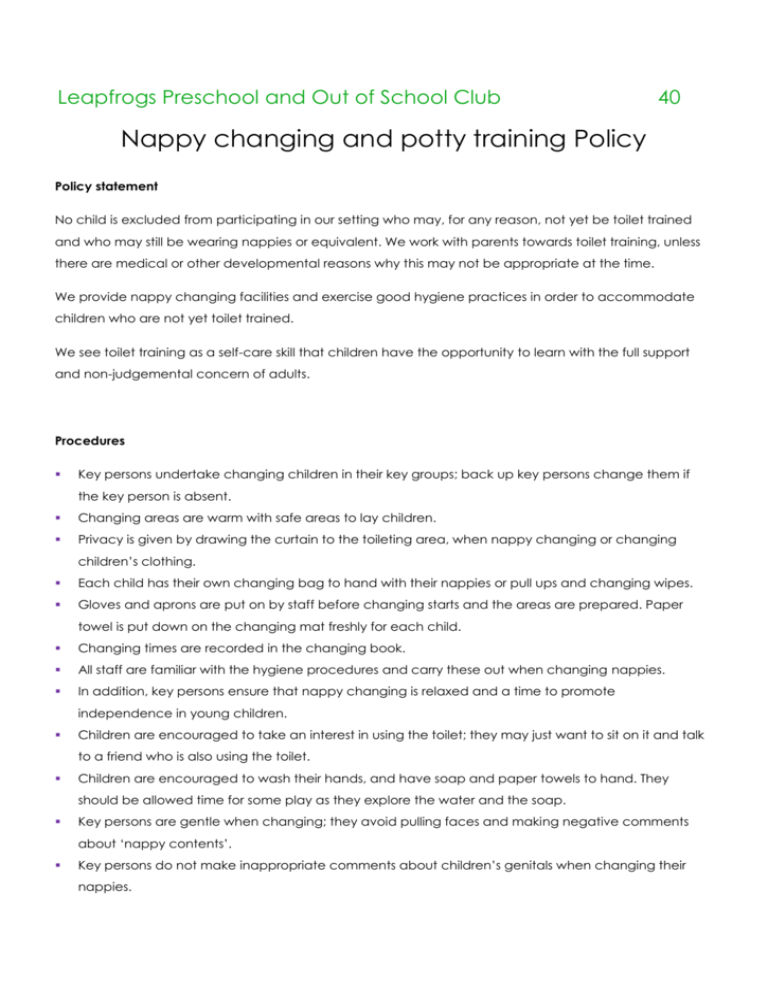
Leapfrogs Preschool and Out of School Club 40 Nappy changing and potty training Policy Policy statement No child is excluded from participating in our setting who may, for any reason, not yet be toilet trained and who may still be wearing nappies or equivalent. We work with parents towards toilet training, unless there are medical or other developmental reasons why this may not be appropriate at the time. We provide nappy changing facilities and exercise good hygiene practices in order to accommodate children who are not yet toilet trained. We see toilet training as a self-care skill that children have the opportunity to learn with the full support and non-judgemental concern of adults. Procedures Key persons undertake changing children in their key groups; back up key persons change them if the key person is absent. Changing areas are warm with safe areas to lay children. Privacy is given by drawing the curtain to the toileting area, when nappy changing or changing children’s clothing. Each child has their own changing bag to hand with their nappies or pull ups and changing wipes. Gloves and aprons are put on by staff before changing starts and the areas are prepared. Paper towel is put down on the changing mat freshly for each child. Changing times are recorded in the changing book. All staff are familiar with the hygiene procedures and carry these out when changing nappies. In addition, key persons ensure that nappy changing is relaxed and a time to promote independence in young children. Children are encouraged to take an interest in using the toilet; they may just want to sit on it and talk to a friend who is also using the toilet. Children are encouraged to wash their hands, and have soap and paper towels to hand. They should be allowed time for some play as they explore the water and the soap. Key persons are gentle when changing; they avoid pulling faces and making negative comments about ‘nappy contents’. Key persons do not make inappropriate comments about children’s genitals when changing their nappies. Older children access the toilet when they have the need to and are encouraged to be independent. Nappies and pull ups are disposed of hygienically, placed in the nappy bin. Cloth nappies, trainer pants and ordinary pants that have been wet or soiled are bagged for the parent to take home. Potties are emptied into the toilet and then the toilet is flushed. Potties are then wiped with an antibacterial wipe and disposed into the nappy bin. At the end of each day the nappy bin is emptied and disposed of within the domestic waste collection bin, behind Hormead School. If Leapfrogs generate more than 7kg of nappies in a normal waste collection time, we segregate this waste into yellow bags and arrange for a registered waste contractor to collect for disposal. When potty training staff consult with the parent/carer to discuss how the training will be managed. Children are not forced to use the toilet or potty. Reward charts can be used to encourage the potty training. We have a ‘duty of care’ towards children’s personal needs. If children are left in wet or soiled nappies/pull ups in the setting this may constitute neglect and will be a disciplinary matter. The Health and Safety (First Aid) Regulations 1981 Policy adopted on: 13/05/14 Policy reviewed on: 12/12/14 Signed on behalf of the committee …………………………………………………………………………………….. Name and role ………………………………………………………………………………………………………………. Date …………………………………………………………………………………………………………………………….
